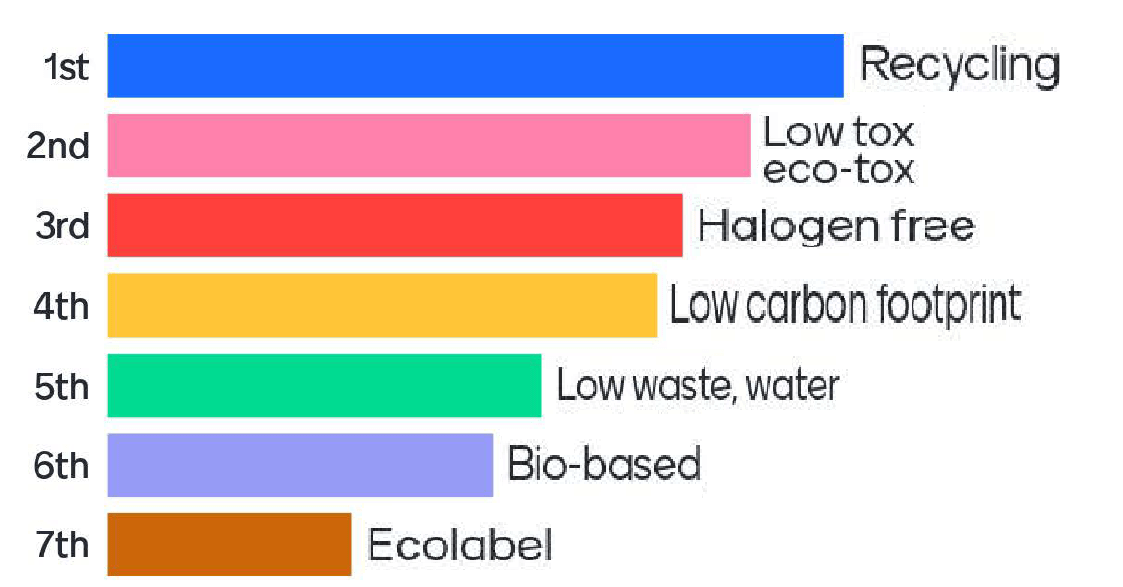
Mentimeter input from Conference delegates during the pinfa panel discussion
Which needs or trends do you see for FRs?
Sustainability and recycling potential.
Environmentally friendly.
Biodegradable.
Halogen-free, to avoid future legacy chemicals.
Address toxic emissions during burning.
Low smoke Life cycle analysis.
Char promoters and low hazard FR synergists.
Bio-based FR additives.
Zero hazard statements on MSDS is goal.
Recycling.
Cost acceptability for Circular Economy.
Recovery of FR additive in recycling.
Recycling of mineral filled materials.
Need for funding of recycling.
Better information on additives in materials.
Cost and performance.
Cost – performance ratio, with recyclability.
Cost-competitive halogen-free.
Effective without compromising mechanical properties.
Efficient at lower loadings.
CTI levels higher than 600V.
Good easy processing, heat stability.
Heat stability.
Low acid, non-corrosive.
Standards.
Unify fire standards between different regions.
Round robin testing at small and application scales.
New chemistries and applications.
Polymeric FRs, intrinsically FR polymers, FRs reacted or integrated into polymer: not additive, to avoid offgassing and leaching.
Halogen free solutions, e.g. for styrenics.
R&D on synergies between FR combinations.
Thermal conductivity.
Hydrolic stability.
New technologies: electric vehicles, 3D-printing.
Information.
Risk assessment of FR use versus non-use.
More complete data time of product life cycle.
More complete MSDS risk information.
What should the FR industry do ?
to demonstrate safety of their products? and fitness for circular economy?.
Develop R&D projects, collaborate.
Define joint industry policies.
Green Screen benchmark.
Eco labels.
Make hazard and toxicity data available.
Include long-term toxicity data in REACH dossiers (beyond minimum requirements).
Recycling studies and demonstration.
R&D into recovery of FR additives from wastes.
Chemical recycling tests with non-halogen FRs.
Collaborate with downstream users, R&D, on recycling.
Promote use of recyclates.
Research FR leaching and losses from products.
Transparency and patenting of FR chemicals (molecular formulae) .
Improve information on plastic material composition and additives.
Traceability of FRs in articles.
Communication to the public on benefits of FRs and environmental impacts